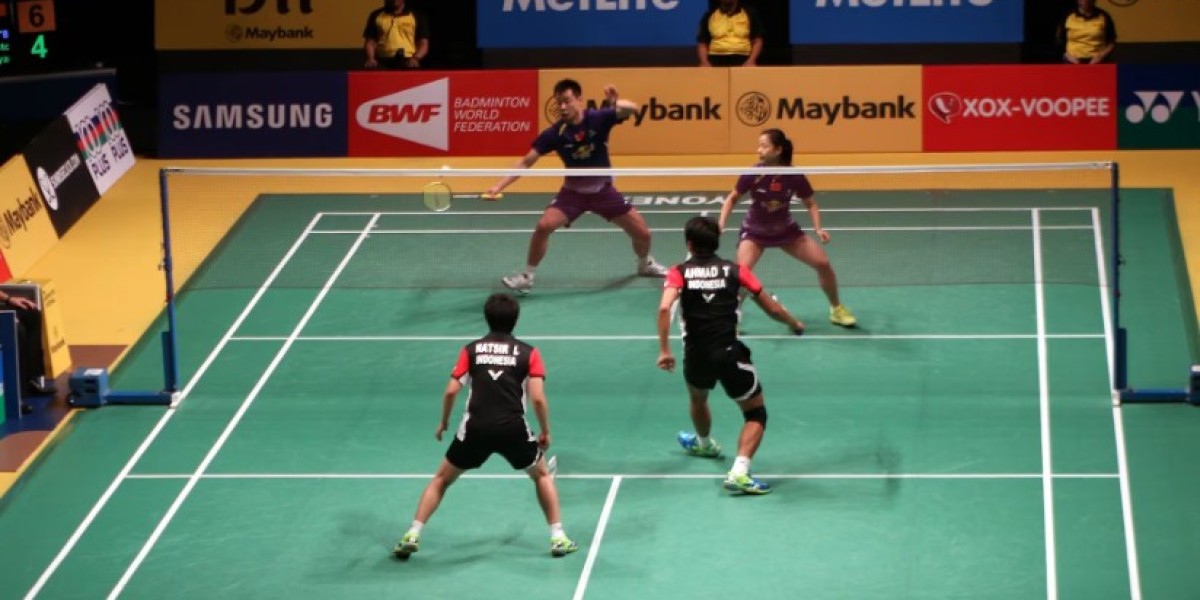Badminton is an exciting and fast-paced sport enjoyed worldwide. To get the most out of this sport, having access to a well-designed badminton court is essential. Whether you’re looking to set up a court at home, a community center, or a professional sports facility, understanding the required dimensions, materials, equipment, and maintenance practices will ensure you create an ideal playing environment. This article will guide you through everything you need to know about a badminton court, from its construction to maintaining its quality for years of use.
What is a Badminton Court?
A badminton court is the designated space where the sport of badminton is played. Badminton is typically played with two or four players (singles or doubles), where the objective is to hit the shuttlecock over a net in such a way that the opponent cannot return it. The court is divided into two halves by a net, and its dimensions and layout are key to ensuring a fair and competitive game.
A high-quality badminton court offers the ideal environment to enjoy the game, ensuring player safety, high performance, and adherence to official regulations.
Standard Badminton Court Dimensions
To create an authentic badminton experience, it's important to get the court's dimensions right. Here are the official measurements as outlined by the Badminton World Federation (BWF):
1. Court Length and Width
- Length: 13.4 meters (44 feet)
- Width for Singles: 5.18 meters (17 feet)
- Width for Doubles: 6.1 meters (20 feet)
While the length of the court remains the same for both singles and doubles, the width differs to accommodate more players in doubles games. The larger width in doubles allows for more room for each player to move around.
2. Net Height
- 1.524 meters (5 feet) at the posts
- 1.55 meters (5 feet 1 inch) at the center of the court
These measurements are critical to ensure the net is properly positioned and tight across the court.
3. Service Areas and Lines
A badminton court has several marked areas for service:
- Short Service Line: Located 1.98 meters (6.5 feet) from the net, used for serving.
- Long Service Line: Located at the farthest end of the court.
- Center Line: Divides the court into two halves to guide serving.
These lines are essential for serving and determining if the shuttlecock lands in bounds.
Selecting the Right Location for Your Badminton Court
When deciding where to place your badminton court, consider factors such as space, lighting, and flooring type. Whether you’re building an indoor or outdoor court, ensuring there’s enough room and optimal conditions is key to an enjoyable game.
1. Indoor vs. Outdoor
Indoor courts are preferred for serious badminton players, as they offer stable conditions like controlled lighting and temperature, and they are unaffected by wind. Outdoor courts, on the other hand, are more prone to weather conditions and wind, which can interfere with gameplay. If you opt for an outdoor setup, ensure you pick a location that is relatively sheltered from wind and elements.
2. Space Requirements
For optimal performance and player safety, ensure you have enough space around the court. The full area required for a badminton court, including extra room for player movement, is:
- Width: 7 meters (23 feet)
- Length: 14 meters (46 feet)
Make sure the space is clear of obstacles and provides players with enough room to move and play freely.
3. Ceiling Height (Indoor Courts)
For indoor badminton courts, ceiling height is essential. A minimum ceiling height of 6 meters (20 feet) is recommended to provide ample room for high shots, smashes, and jump shots without obstruction.
Choosing the Best Flooring for Your Badminton Court
The flooring material can significantly affect the quality of the game and player safety. Here are the most common flooring options for badminton courts:
1. Wooden Flooring
Wooden flooring, especially maple or beech, is the preferred choice for professional badminton courts. It provides excellent shock absorption, reducing the risk of injury, and ensures smooth, responsive movement. Wooden floors are durable, attractive, and ideal for indoor settings.
2. PVC Flooring
PVC (Polyvinyl Chloride) flooring is a more affordable option and is often used in recreational or multi-purpose sports halls. It provides decent shock absorption and is easy to clean, but it may not offer the same responsiveness as wooden floors.
3. Rubber Flooring
Rubber flooring is another option that provides comfort and slip-resistance. It’s ideal for recreational badminton courts or gymnasiums, offering protection from injuries and providing cushioning. However, it may not provide the same level of speed and bounce as wooden flooring.
Essential Equipment for a Badminton Court
To ensure a complete badminton setup, several pieces of equipment are needed. Here’s a breakdown of the essentials:
1. Badminton Net
The badminton net is an essential part of the court setup. It should be made of strong and durable material, such as nylon or polyester. The net should be positioned at the correct height and should be stretched tightly to prevent sagging. It should be able to withstand frequent impacts from the shuttlecock.
2. Shuttlecock
Shuttlecocks, or birdies, are used in place of a ball in badminton. There are two types:
- Feathered Shuttlecock: Made from feathers, these provide superior flight characteristics and are commonly used in professional competitions.
- Synthetic Shuttlecock: Made from nylon or plastic, these are more durable and typically used in recreational or outdoor play.
Choose the type of shuttlecock based on your level of play and budget.
3. Badminton Rackets
Badminton rackets are typically lightweight and made from materials like carbon fiber, aluminum, or graphite. The racket’s weight, balance, and stiffness all affect gameplay. Beginners may prefer a more flexible racket, while competitive players often opt for stiffer, lighter rackets for enhanced control and power.
Maintaining Your Badminton Court
To ensure the longevity and performance of your badminton court, regular maintenance is necessary. Here are a few tips for keeping the court in top condition:
1. Regular Cleaning
Dirt and dust can accumulate on the court surface, which may affect the quality of the game. Regular cleaning is crucial for maintaining the court. For wooden floors, use a soft mop, and for PVC or rubber floors, sweep or vacuum to remove debris.
2. Net Adjustment
Periodically check the badminton net to ensure it is properly tensioned. A sagging net can impact gameplay and fairness. Adjust the net to ensure it’s positioned correctly at the center and that it meets the required height.
3. Repairing Flooring
Over time, the flooring may wear, especially with high traffic. Wooden floors may require sanding and refinishing to maintain their smoothness. For PVC or rubber floors, check for any damage, such as cracks, and replace sections as needed.
4. Lighting and Ventilation (Indoor Courts)
Proper lighting is essential for indoor badminton courts to avoid shadows or glare. Install overhead lighting that illuminates the entire court. Also, make sure the space is well-ventilated, as proper air circulation is crucial for a comfortable playing environment.
Conclusion
Creating a high-quality badminton court requires thoughtful planning, attention to detail, and proper maintenance. By understanding the court’s dimensions, selecting the right flooring and equipment, and taking steps to maintain it, you can ensure that your badminton court provides an optimal environment for play. Whether you are setting up a court at home, in a community center, or in a professional facility, following these guidelines will help you enjoy the game to its fullest. A well-designed badminton court enhances the experience, ensures safety, and allows players to improve their skills while enjoying the sport.



